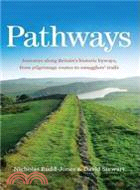圖書簡介Today we walk mainly for pleasure, using the many "rights of way" that criss?cross Britain, with little thought for their original purpose. But for England's first foot travelers, paths, tracks, and ways developed because they had to. In many cases it was for work?herding cattle, or trudging to and from a mine. Other tracks and roads stemmed from military or political control, from the roads the Romans laid across the countryside, to Anglo?Saxon dykes, right up to more modern defenses. Then there are routes that people followed for ritual and religious reasons, such as the processional paths in the Neolithic, Bronze, and Iron ages and the pilgrimages of medieval times. Only more recently do we find paths created, or enhanced, specifically for leisure. We have carefully tailored circuits on country estates, tracks across moorland for the hunting of deer, and the much more recent "sculpture trail." Here, David Stewart and Nicholas Rudd?Jones seek out paths, tracks, and ways and their oft?hidden original purpose. Telling both the story of the pathway and the people who traveled on it before, the authors describe the historical background of each path, while also bringing to life the experience of walking it today.












